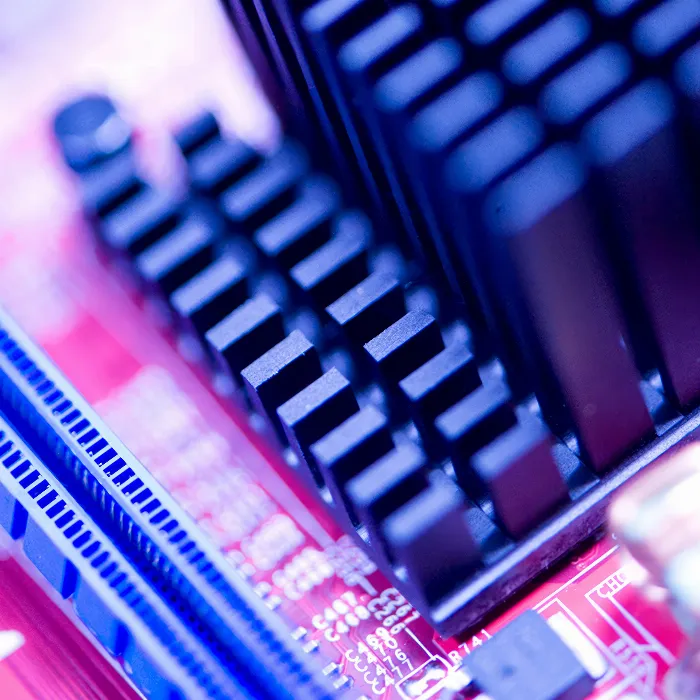The photo studio
Owning your own studio doesn't just mean having plenty of space for creativity. It also means being constantly exposed to monthly financial burdens.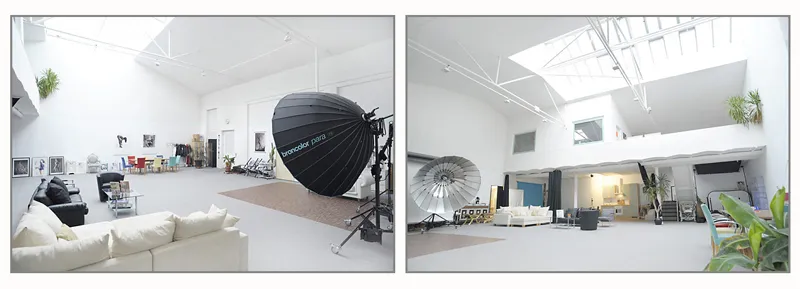
Own studio vs. rental studio
Whether maintaining your own studio is worthwhile depends very much on the area of photography in which you want to become self-employed. Press photographers with their own studio will probably only exist in exceptional cases. If, on the other hand, you want to set up your own business as a portrait photographer whose core business is family, wedding and passport photos, then having your own studio is almost a prerequisite.
But what if you want to work in editorial, advertising or Stocker photography (photos that you sell to photo agencies, which in turn sell them on to customers from all sectors such as advertising and magazines)? Does it then make sense to maintain your own studio? Of course, there is no general answer to this question. It simply depends on your focus as to whether you regularly need your own studio or whether you use a rental studio on a case-by-case basis, i.e. for fixed assignments or freelance work.
Stock photographers will only have their own studio in exceptional cases. Photographing in a studio would be too one-sided in the long run, as stock agencies usually ask for varied, lively motifs, mainly with people in natural surroundings.
However, as long as you can do without maintaining your own studio (and thus "save" on monthly rental payments), you should switch to rental studios where you only pay for use on a case-by-case basis, i.e. usually for paid jobs. The money you save by not having to make monthly rent or installment repayments is better spent on building up a financial cushion or expanding your photographic and lighting equipment!
Example calculation: You decide to rent and set up your own studio. Since your colleague offers you a good rate for the use of his studio, for example 200 euros per day, and you probably use the studio for fixed photo jobs on an average of 4 days per month, this would add up to 9,600 euros per year for the rental studio. A comparable studio of your own would cost you around 1,400 euros per month, including additional payments for heating and other permanently rising ancillary costs. Extrapolated over the year, that would be 16,800 euros. The difference that you would save if you waited a whole year before renting your own studio would be 7,200 euros. For that you get a professional full-frame DSLR including 2-3 high-quality lenses!
For some of you, however, it will turn out to be cheaper in the long term to do without your own studio and work in rental studios instead. However, this is by no means a sign of a lack of success, as even many established photographers do not have their own studio, but often only an office (with storage facilities for the equipment), because they work all over the world or take a lot of pictures on location and it would therefore not be profitable to have their own studio. In any case, you are more flexible without your own studio (for example, during long stays abroad, such as when photographing hotels for vacation catalogs)!
If you often travel abroad, for example to photograph fashion or for vacation catalogs, it is probably not worthwhile for you to have your own studio.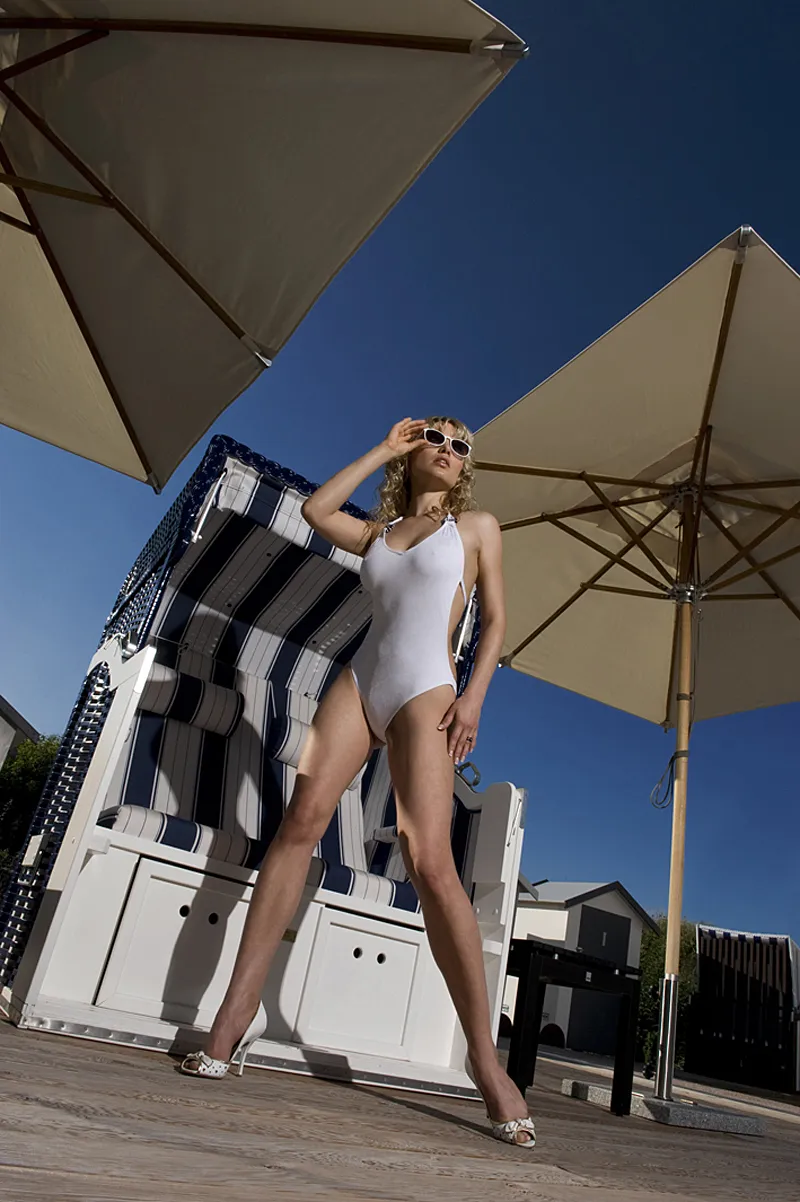
Advantages and disadvantages of a studio community
As long as two or more photographers get on well with each other, the formation of a studio community is the seemingly logical consequence of this collaboration. Sharing the (studio) costs incurred, mutual help and support with photo assignments, joint purchase of interiors and props, the possibility of joint advertising measures and, last but not least, hoped-for synergy effects resulting from the fact that the parties have different skills and focuses are just a few of the advantages of a studio community.
However, despite all the enthusiasm about the great cooperation, it should not be forgotten that there may also be times when different ideas, for example about the strategic direction of the photographic activity and the associated investments, can lead to a break-up of the studio community. You should therefore be absolutely certain that you will still be working with your partner or partners in the distant future before you decide to form a studio community.
Even if everything seems too rosy at the beginning of the collaboration and the enthusiasm of the WE feeling masks all potential complications, you should make a cool-headed calculation as to whether such a partnership can last in the long term.
Even close friends can get into arguments at some point, for example when it comes to the strategic direction of the photographic work or how the studio should be set up. So think carefully about whether you want to take the risk of sharing a studio.
And what happens if one of the photographers wants to leave the studio community (if it consisted of more than 2 photographers)? Does this mean that the remaining studio community has to be dissolved? Should it be paid out? In what amount? Should the jointly purchased equipment be divided up or sold? What happens to the interior? These and other questions need to be clarified before you decide to enter into a studio partnership.
Generally speaking, the more photographers want to participate in the studio community, the more difficult it will be to distribute the tasks and burdens. It is not without reason that the most common type is the 2-person studio community. Each additional person would only make the coordination processes even more difficult.
However, it will often make more sense if only one of the people involved maintains the studio and receives money for its use either regularly or occasionally from their colleagues. This avoids the problem that everyone involved always has to be of the same opinion.
Please also note that, according to the Service Information Obligations Ordinance (which came into force in May 2010), you must notify your customers of professional communities, which also includes the studio community. For the sake of simplicity, it is best to refer to this cooperation on the homepage and in the general terms and conditions, if available.
Tips on the rental contract
The decisive factor when renting your own studio is the amount of the rent, as the studio rent will be the biggest cost factor in your business calculations in the future. Haggle over every euro, push the monthly rent down as far as you can! Unfortunately, we are used to calculating with as even sums as possible (unfortunately, so am I, which I have often regretted). In the case of studio rents, this means that you will probably pay an amount that is stated to the nearest hundred, for example 1,500 euros per month. If the landlord cannot be negotiated down to 1,400 euros, try to get 1,450 euros, or even better 1,438 euros. If your landlord agrees, you will have saved 62 euros a month. In other words, you will have avoided paying 7,440 euros over 10 years! And that's not even counting the effect of interest. This is a considerable sum, which could easily be used to purchase a modern flash system with extensive accessories.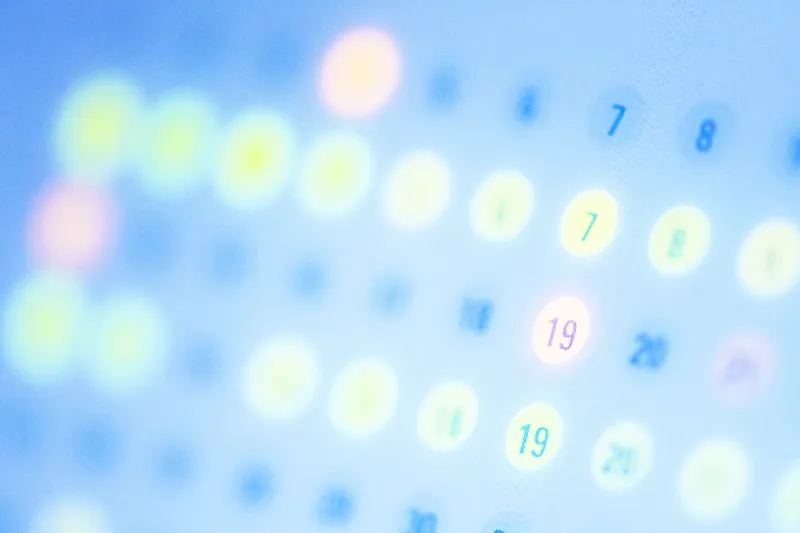
Calculate carefully beforehand whether you will be able to maintain your own studio. Because not only the rent, but also all kinds of additional costs will become due at some point. These will probably only become unpleasantly noticeable for the first time in the service charge bill. So try to negotiate the rent down as far as possible, because even small amounts saved in this way add up to a considerable sum over time.
In addition to the openly stated studio rent, it is essential to calculate a larger amount that will be presented to you with 100% certainty in the annual service charge statement. Many landlords deliberately calculate the service charges too low and therefore incorrectly, because they know that a high rent reduces the chances of letting the property. The nasty surprise then comes with the first service charge bill, where it is not uncommon to have to pay up to EUR 3,000 per year for a commercial property of 200 to 500 square meters. In addition, many ancillary costs for which the local authorities are responsible are constantly rising, such as waste collection. And the cost of heating oil and electricity has also risen steadily in recent years, so it was not for nothing that we pointed out at the beginning of this article that a successful start to self-employment requires a not inconsiderable financial cushion.
Other items in the utility bills can include, for example, property tax, sewage, refuse collection charges, street cleaning charges, sewerage charges, insurance premiums, maintenance and cleaning of the heating and hot water supply, chimney sweep fees, immission measurement costs, costs of a fire inspection, administration and janitor costs, etc.
For reasons of caution, I strongly recommend insisting on a simplified termination option for you in the lease negotiations. After all, you are a start-up. If the rented property turns out to be a bottomless pit from a financial point of view or the orders don't come in as regularly as you had hoped, you may still have the opportunity to terminate the lease in good time before you go completely bankrupt. Remember that different laws apply to commercial rental agreements than to a privately rented apartment, for example. The landlord has much more freedom when it comes to drafting the clauses in the rental agreement; in this respect, you should check the rental agreement very carefully and ideally have it checked by a lawyer and, if in doubt, keep your hands off the rental property. After all, there are certainly other suitable premises - as long as you look hard enough.
To avoid any unpleasant surprises, it's best to try to find the previous tenant, as they know all the disadvantages of the rented property - after all, they used it and moved out again. But why did they move out? Did they perhaps move out for reasons to do with the terms of the tenancy agreement or defects in the building? In any case, it is interesting to talk to the previous tenant in order to gain insider knowledge, which is helpful when deciding whether to rent the property. If the previous tenant cannot be found and the landlord refuses to provide contact details, it is best to ask the neighbors or the postman or parcel carrier whether they are still in contact with the previous tenant. After all, parcels etc. that were delivered to the old address still have to be forwarded to the previous tenant. In the case of commercial tenants, no one is likely to have any concerns about data protection and will certainly be happy to provide you with information.
Tips on the location
If you want to set up your own business in portrait, wedding, passport and family photography (i.e. B2C - business to consumer), having your own studio is essential. The studio should be at ground level, preferably without steps in the entrance area, and ideally be located in a busy shopping street (preferably in a pedestrian zone) or within a large shopping center. A large shop window as an eye-catching advertising space will then help to present your photos and services to potential customers in the best possible way.
However, before you rent a suitable property, find out from the neighborhood and the municipality whether any major construction sites are planned in the vicinity of the property in the future, as long-term construction work is anything but good for business. It is not uncommon for businesses to go out of business because major building sites put customers off and keep them away! You don't need such difficulties in the start-up phase of your company!
If your future business relationships are geared more towards the business sector (B2B), your future studio can be located in a backyard or in an industrial area. A fast freeway or airport connection is probably more important for your business than being recognized as a photo studio by private individuals. Large shop windows are also more of a hindrance than a benefit.
What is more important is whether the studio also has an entrance for large vehicles, for example, if you photograph bulky products such as white goods or heavy machinery or even for the automotive industry. In this case, as well as in automotive or motorcycle photography, a large white cove will be essential, as will a ceiling track system with light tray(s). One of the leading suppliers of such studio equipment in Germany is the company Bacht in Essen.
My studio has an ideal location. It is easy to get to, and the nearby shopping center is not only a great place to pick up all kinds of food, but also all kinds of props, such as children's toys.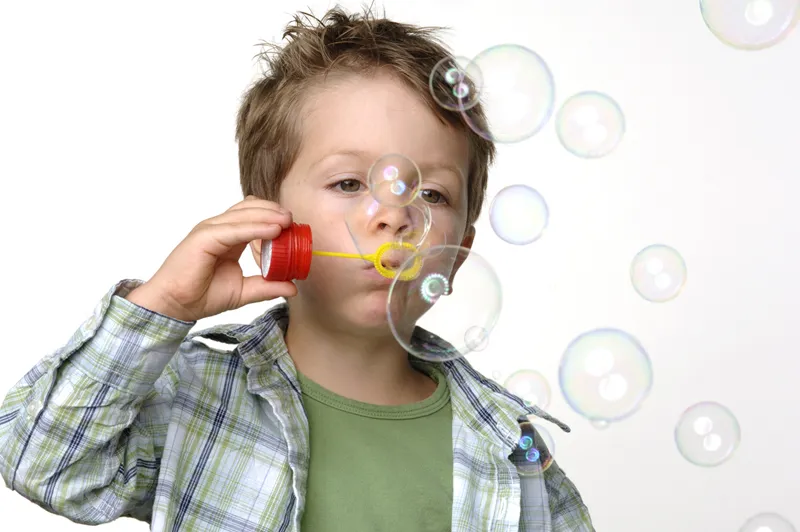
Tips on the suitability and sensible set-up of your own photo studio
Once you have decided that having your own studio makes sense and will probably be more cost-effective than other solutions in the long term, and you have found a suitable rental property, the question of the ideal conditions and the appropriate furnishings remains.
The ceiling height should be at least three meters, more likely 3.50m. Otherwise you will quickly run out of creative ideas if the light cannot be used according to your wishes.
The required studio size itself depends of course on the focus, i.e. what you want to photograph. In portrait studios, experience shows that 120 square meters of floor space is sufficient to start with; more is always better, of course, because over the years a lot of props and other accessories accumulate. In advertising photography - again, of course, depending on the chosen focus - the literature repeatedly mentions a minimum square meterage of 200. As I have set up several areas in my studio - almost like a home - and have been constantly expanding my equipment and props for more than twelve years, I now increasingly think that an even larger studio wouldn't be so bad ... mind you, with 300 square meters available!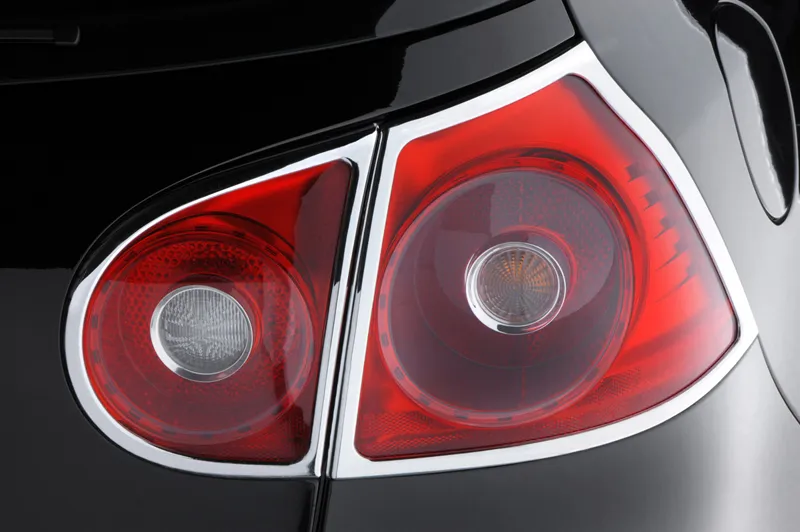
If you regularly want to photograph cars or accessories, you should look for a studio with a gateway. Alternatively, if such jobs are only expected on an occasional basis, you can also opt for a suitably equipped rental studio.
As you can see, if you're planning for the long term, you shouldn't underestimate the amount of space you need. Especially as a room or at least a corner needs to be set up somewhere for the computer area with computer workstation, monitor, printer, graphics tablet, network technology, telephone, fax and archiving hardware. There should also be a meeting table with approx. 8 chairs, a kitchenette with fridge, one or more toilets, a bathroom with shower facilities for the models and an archive room for your specimen copies of publications and your own printed matter (e.g. your advertising). There should also be a "junk room" somewhere for all kinds of junk, or would you like to have vacuum cleaners, cleaning materials, snow shovels, brooms, crates of drinks and other necessary stuff in the middle of the (preferably representative) studio? All of this can quickly significantly reduce the actual studio space that can be used for effective work.
If your camera and studio flash equipment is slowly taking on professional proportions, we recommend purchasing a sturdy safe that is as large as possible. To be able to sleep without worrying, it is also advisable to install a well-functioning alarm system, which should be fitted by a specialist.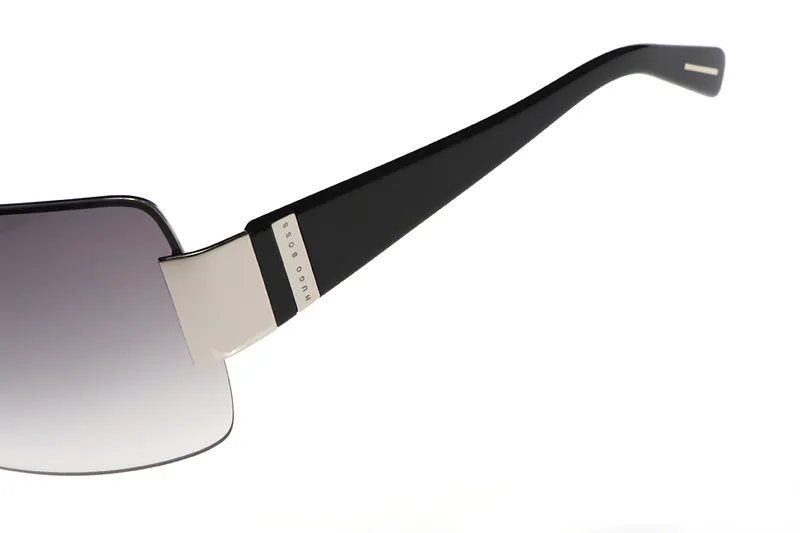
Every photo studio should have an area that can be completely darkened. This makes it much easier to create product photos that would be disturbed by extraneous reflections. For model photos, it is important that the studio can also be heated well in the winter months.
There are plenty of background devices - also a must-have in studio photography. When buying, however, make sure that you choose a stable solution, as you are guaranteed to use the backdrop more often. The chain for unrolling should also not be made of plastic. If the backdrop is on wheels, you are more flexible; you can use the system in several places in your studio. This is ideal if you can use the different background boxes for different sets. It is also advantageous if the background rolls that are not needed can be stored on the background system, as this saves space. Alternatively, a hanging system in the form of several hooks on the wall can be used to hold the rolls.
You will always need backgrounds in white, black and gray. Other colors for background rolls or different fabric patterns can be purchased as needed. Over time, you will accumulate a large selection of different colors.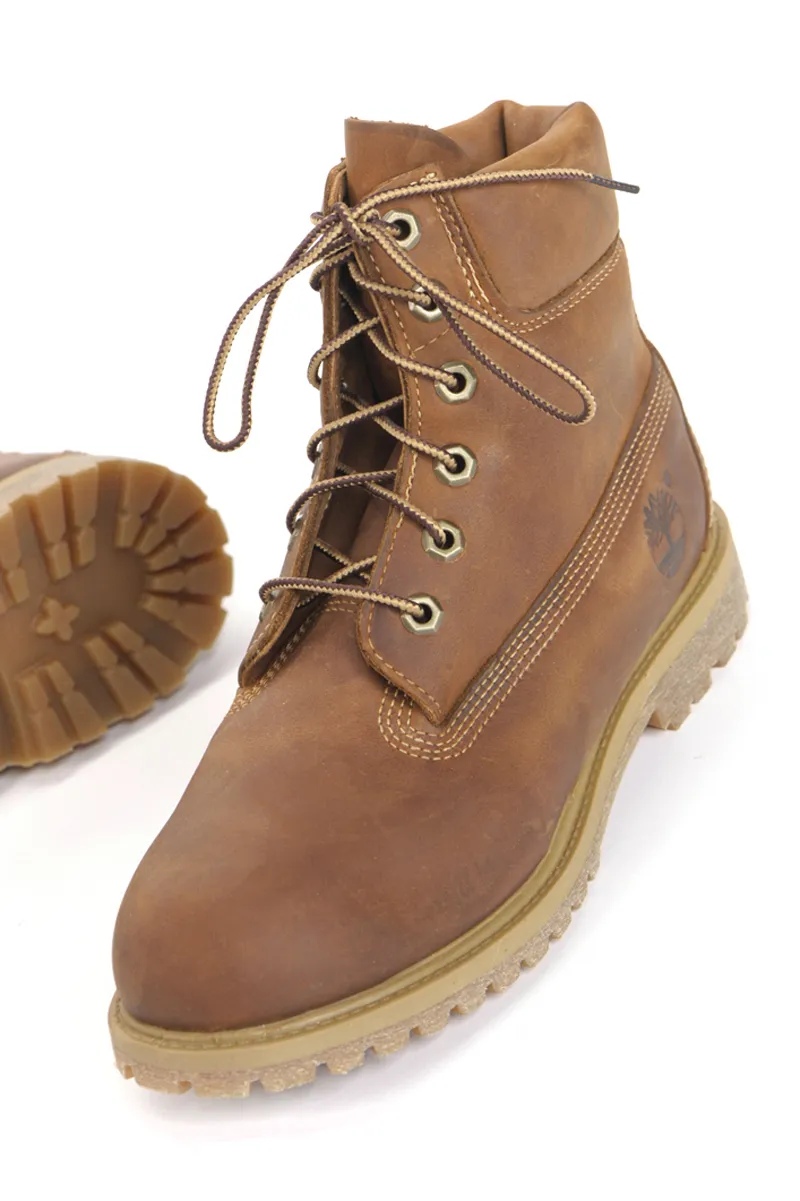
You will definitely need a light table if you want to start your own business as a commercial photographer. But it's better to buy one that's as big as possible; otherwise you'll regret buying one that's too small when you have to photograph larger products for the first time.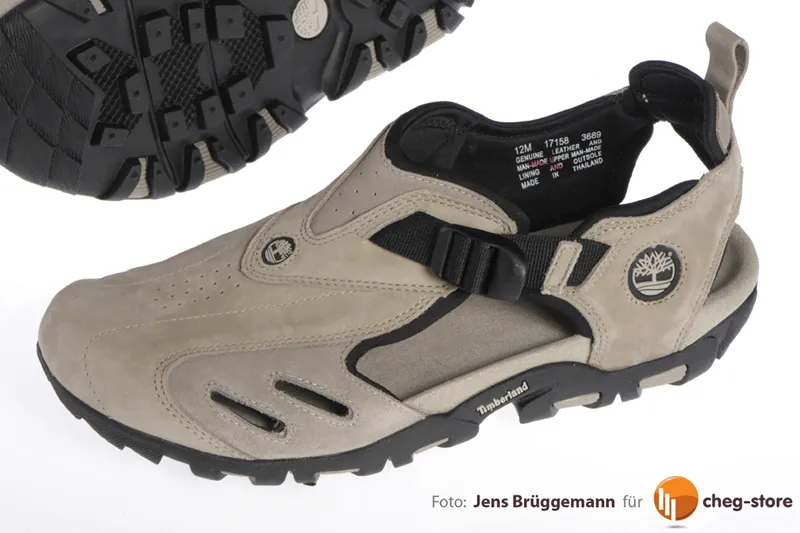
It's best to make two long lists where you note down the most important points regarding the requirements that your future studio should fulfill and the items you still need that you think will support your work and should therefore not be missing. Try to incorporate the experience you have gained in the past from your previous photo assignments and freelance work.
